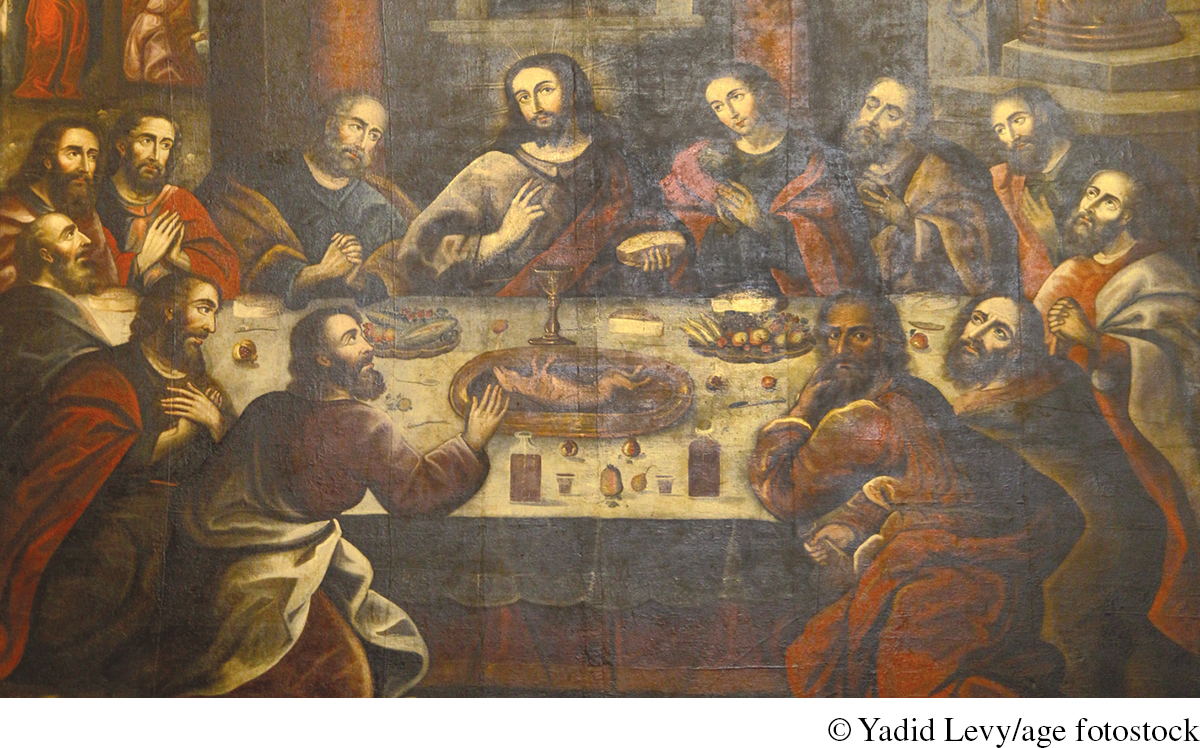Conversion and Adaptation in Spanish America
Spanish America and China illustrate the difference between those societies in which Christianity became widely practiced and those that largely rejected it. Both cases, however, represent major cultural encounters of a kind that was becoming more frequent as European expansion brought the Christian faith to distant peoples with very different cultural traditions.
Connection
In what ways was European Christianity assimilated into the Native American cultures of Spanish America?
The decisive conquest of the Aztec and Inca empires and all that followed from it—
Earlier conquerors had made no attempt to eradicate local deities and religious practices. The flexibility and inclusiveness of Mesoamerican and Andean religions had made it possible for subject people to accommodate the gods of their new rulers while maintaining their own traditions. But Europeans were different. They claimed an exclusive religious truth and sought the utter destruction of local gods and everything associated with them. Operating within a Spanish colonial regime that actively encouraged conversion, missionaries often proceeded by persuasion and patient teaching. At times, though, their frustration with the persistence of “idolatry, superstition, and error” boiled over into violent campaigns designed to uproot old religions once and for all. In 1535, the bishop of Mexico proudly claimed that he had destroyed 500 pagan shrines and 20,000 idols. During the seventeenth and early eighteenth centuries, church authorities in the Andean region periodically launched movements of “extirpation,” designed to fatally undermine native religion. They destroyed religious images and ritual objects, publicly urinated on native “idols,” desecrated the remains of ancestors, flogged “idolaters,” and held religious trials and “processions of shame” aimed at humiliating offenders.

It is hardly surprising that such aggressive action generated resistance. Writing around 1600, the native Peruvian nobleman Guaman Poma de Ayala commented on the posture of native women toward Christianity: “They do not confess; they do not attend catechism classes … nor do they go to mass…. And resuming their ancient customs and idolatry, they do not want to serve God or the crown.”6 Occasionally, overt resistance erupted. One such example was the religious revivalist movement in central Peru in the 1560s, known as Taki Onqoy (dancing sickness). Possessed by the spirits of local gods, or huacas, traveling dancers and teachers predicted that an alliance of Andean deities would soon overcome the Christian God, inflict the intruding Europeans with the same diseases that they had brought to the Americas, and restore the world of the Andes to an imagined earlier harmony. They called on native peoples to cut off all contact with the Spanish, to reject Christian worship, and to return to traditional practices. “The world has turned about,” one member declared, “and this time God and the Spaniards [will be] defeated and all the Spaniards killed and their cities drowned; and the sea will rise and overwhelm them, so that there will remain no memory of them.”7
More common than such frontal attacks on Christianity, which colonial authorities quickly smashed, were efforts at blending two religious traditions, reinterpreting Christian practices within an Andean framework, and incorporating local elements into an emerging Andean Christianity. Even female dancers in the Taki Onqoy movement sometimes took the names of Christian saints, seeking to appropriate for themselves the religious power of Christian figures. Within Andean Christian communities, women might offer the blood of a llama to strengthen a village church or make a cloth covering for the Virgin Mary and a shirt for an image of a huaca with the same material. Although the state cults of the Incas faded away, missionary attacks did not succeed in eliminating the influence of local huacas. Images and holy sites might be destroyed, but the souls of the huacas remained, and their representatives gained prestige. One resilient Andean resident inquired of a Jesuit missionary: “Father, are you tired of taking our idols from us? Take away that mountain if you can, since that is the God I worship.”8
In Mexico as well, an immigrant Christianity was assimilated into patterns of local culture. Parishes were organized largely around precolonial towns or regions. Churches built on or near the sites of old temples became the focus of community identity. Cofradias, church-
Throughout the colonial period and beyond, many Mexican Christians also took part in rituals derived from the past, with little sense of incompatibility with Christian practice. Incantations to various gods for good fortune in hunting, farming, or healing; sacrifices of self-